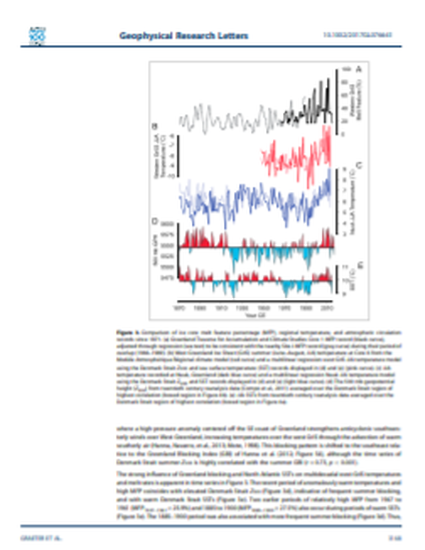
Remote sensing observations and climate models indicate that the Greenland Ice Sheet (GrIS) has been losing mass since the late 1990s, mostly due to enhanced surface melting from rising summer temperatures. However, in situ observational records of GrIS melt rates over recent decades are rare. Here we develop a record of frozen meltwater in the west GrIS percolation zone preserved in seven firn cores. Quantifying ice layer distribution as a melt feature percentage (MFP), we find significant increases in MFP in the southernmost five cores over the past 50 years to unprecedented modern levels (since 1550 CE). Annual to decadal changes in summer temperatures and MFP are closely tied to changes in Greenland summer blocking activity and North Atlantic sea surface temperatures since 1870. However, summer warming of ~1.2°C since 1870–1900, in addition to warming attributable to recent sea surface temperature and blocking variability, is a critical driver of high modern MFP levels.
This document was originally published in Geophysical Research Letters by John Wiley and Sons, Inc. on behalf of the American Geophysical Union. Copyright restrictions may apply. doi: 10.1002/2017GL076641
Available at: http://works.bepress.com/hanspeter_marshall/36/

For a complete list of authors, please see article.